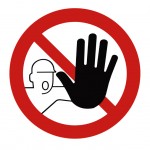Planning
Long before you step onto stage, you should lay out your persuasive objectives and create a plan to achieve them. The posts in this category help you step through the process.
Long before you step onto stage, you should lay out your persuasive objectives and create a plan to achieve them. The posts in this category help you step through the process.
When Elliot was 12 years old, he and some buddies were racing around our house. I said, “Hey kids, lighten up a little bit.” Elliot looked at me sternly and said, “Dad, we’re not kids. We’re pre-teens!”
Elliot wanted a demographic of his own. He didn’t want to be a “kid” anymore. At the opposite end of the age spectrum, I now feel a similar need.
I now belong to a well established demographic defined as “over 65 and retired”. In other words, I’m old.
The odd thing is I don’t feel old, at least not in the traditional sense. I remember my grandfather. He had false teeth, an uncertain gait, and complained of myriad aches and pains. When he died, people said he died of old age. I’m not old like that – at least not yet.
So I want my own demographic. Yes, I’m over 65 and yes, I’m semi-retired. But I still teach part-time, run a website, and tend to my clients. I raise money for good causes. I study issues and have opinions. I serve on boards. I write letters to the editor. I’m not (yet) an old guy sitting on a park bench watching the world go by.
I also spend money. My wife and I have a nest egg and some purchasing power. We should be of interest to marketers who have interesting things or services to sell. But it would be easy for a marketer to overlook us. We could easily be mistaken for regular old “old” people.
So, let’s segment the market and create a new demographic. But what should we call it? The question came to a head for me when I read a recent editorial in The Economist called “Over 65 Shades Of Grey”. The article notes that “Branding an age category might sound like a frivolous exercise. But life stages are primarily social constructs, and history shows that their emergence can trigger deep changes in attitudes. … Declaring a new stage of life could help change perceptions.”
To remind marketers and analysts that we exist – and that we’re not doddering, dependent drains on society – we need a name. The Economist suggests a few non-starters like “geriactives” and “pre-tirees.” Sorry, but those just don’t work for me.
So, I hereby propose that we name our demographic the keenagers. Like teenagers, we’re a well-defined group with many common interests. We’re keen to learn, travel, advise, engage, and spend. We’re even keen to work every now and then. We’re keen to do, not just observe.
What are the advantages of establishing keenagers as a separate demographic? First, we can change perceptions. We’re not old in the traditional sense and don’t need to be treated as such. Second, marketers can develop and refine products and services that meet our needs more effectively. Third, forecasters can fine-tune their data make better predictions about us and about society as a whole.
Perhaps the ultimate advantage is that the label gives us keenagers a convenient and non-derogatory way to refer to ourselves. We belong to an attractive and interesting cohort. We’re not old. We’re keenagers.
Yesterday, I wrote about four ways to be unpersuasive — in the broadest sense. Today, let’s narrow the focus and talk about three things not to do in public speaking. These are behaviors that I see all too frequently and they detract from your effectiveness and your persuasiveness. (For my tips on three things you should do, click here).

No ned to apologize.
Don’t fumble around — I see far too many presenters using the first five to ten minutes of their time fumbling around with their technology. As you’re trying to find your PowerPoint file, I’m reading your desktop — and I often find some very interesting tidbits. Show up early, make sure everything works, and be ready when the audience shows up. Even more radical — give a presentation without using PowerPoint. That simplifies everything.
You can learn more in the video. Speaking of which, this is a good opportunity to acknowledge again that I started this video series when I was still an executive at Lawson. When I retired, Lawson very graciously permitted me to use the videos to build my own practice. I certainly appreciate it.
I used to be proud of my ability to focus. When I was a software executive, I could identify my top priorities for the day and focus on
getting them done. That sometimes meant that I turned off my phone and ignored my e-mail. I had an assistant who could run interference for me. Sometimes, I hid in an office where my colleagues wouldn’t expect to find me. I could focus for several hours at a time — maybe even an entire day — and just get stuff done.
Now that I’m a consultant with multiple clients, I’m constantly shifting from one topic or task to another. I can’t hide from my boss to get stuff down. I am the boss. I can’t very well hide from my clients. If they can’t find me, they don’t pay me. I feel like I randomly shift from one topic to another, from one client to another, from one task to another. Like an old car, I’m worried that the constant shifting will strip my gears.
What to do? Here’s what I’ve figured out. I’d love to hear your suggestions as well.
 In many ways, strategy is simple. Yet we often want to make it more difficult and more complicated than it really is. We want it to sound powerful and provocative. We want to inspire our employees and investors with eloquent phrases and motivational messages. But strategy, in itself, is not inspirational. You can create inspirational messages about your strategy but the strategy itself simply says, “we do this; we don’t do that”.
In many ways, strategy is simple. Yet we often want to make it more difficult and more complicated than it really is. We want it to sound powerful and provocative. We want to inspire our employees and investors with eloquent phrases and motivational messages. But strategy, in itself, is not inspirational. You can create inspirational messages about your strategy but the strategy itself simply says, “we do this; we don’t do that”.
Be sure to separate the messaging (and the inspiring) from the strategy per se. A simple way to clarify your strategy is to focus on what you don’t do. By clearly defining what you don’t do, you can save yourself a lot of time and grief. You can invest that time into doing a better job of what you do do. That’s inspirational.
Learn more in the video.
If you’re shot down behind enemy lines, would you rather be alone or in a group of colleagues? According to research from the U.S. Air Force, your chances of survival are better if you’re alone. That may seem counter-intuitive but groups — especially temporary groups with fluid leadership — often shift toward riskier behavior. Individuals tend to make fact-based decisions that often result in better outcomes.
fluid leadership — often shift toward riskier behavior. Individuals tend to make fact-based decisions that often result in better outcomes.
In other words, an individual makes more conservative decisions. Operating alone, he or she focuses on and assesses the situation. In a group, members assess each other as well and may make decisions based on group dynamics rather than facts and evidence. This is what Robert Cialdini calls “social cues” — we look to each other for cues on how we should behave rather than making a hardheaded assessment of the situation.
To effectively lead groups, you need to understand how group dynamics and social cues can change your behavior. You may “go with the group” even if you feel uncomfortable with their decision. Watch the video — you might be surprised at what you would do if you find a man lying unconscious on the streets of Manhattan.